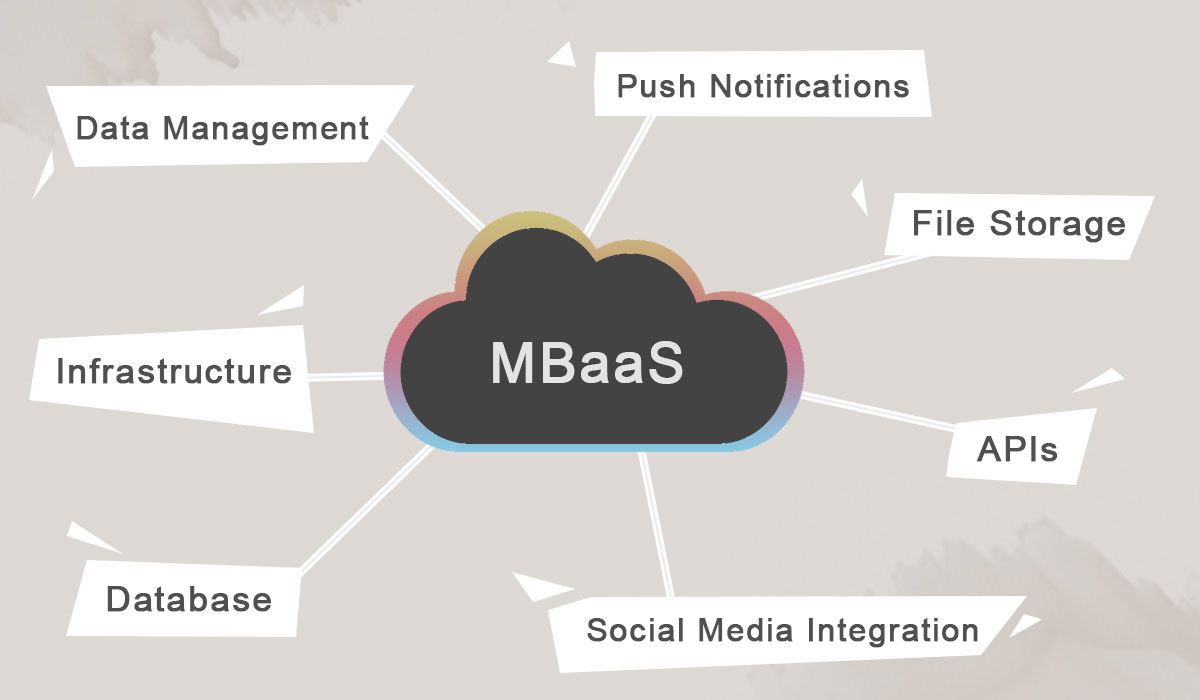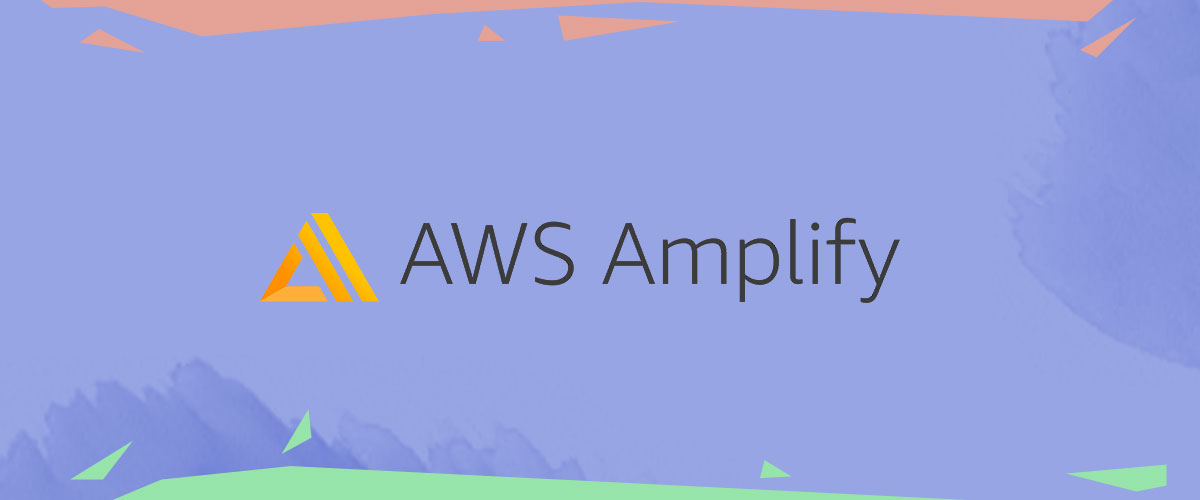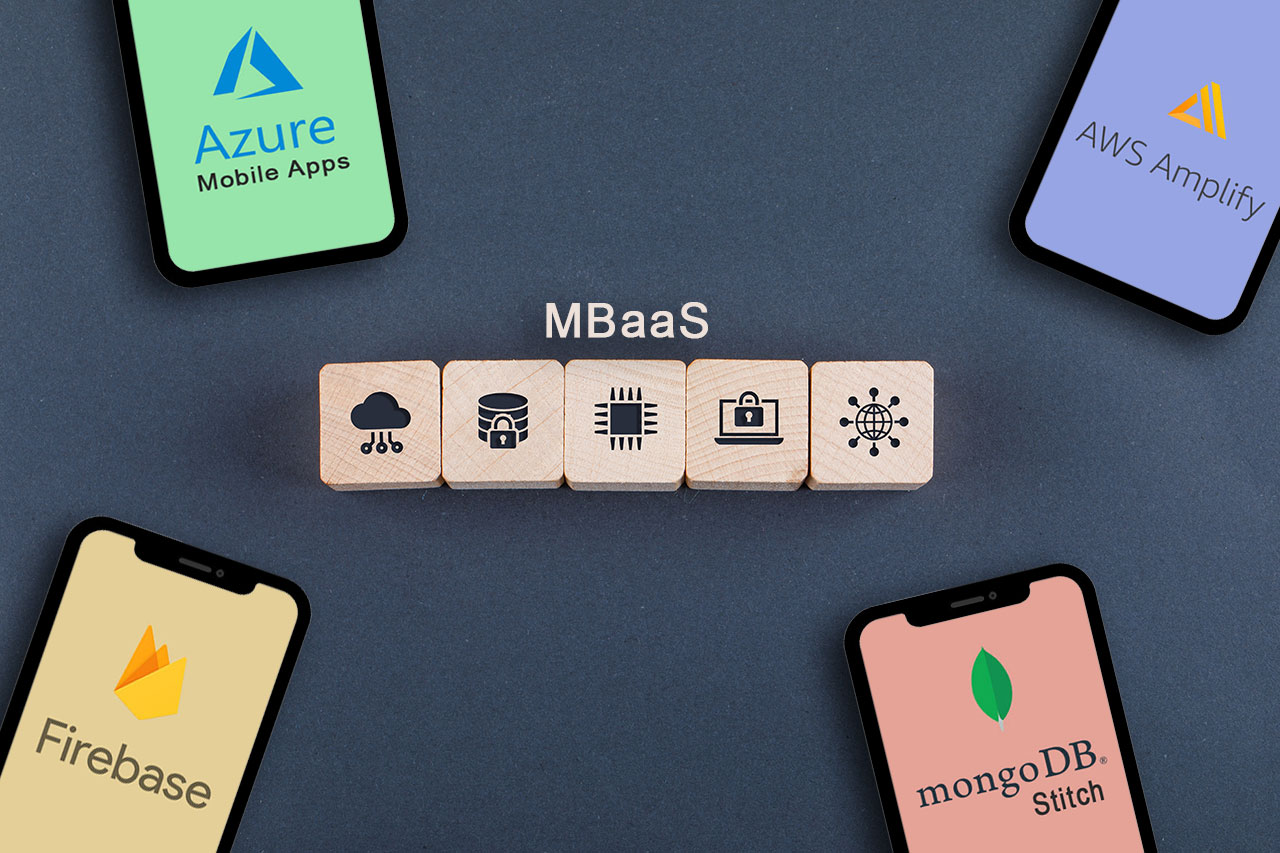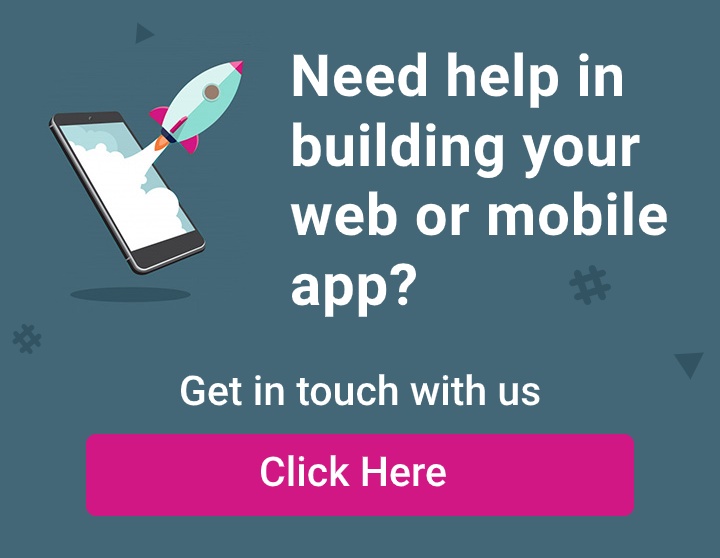Firebase vs MongoDB Stitch vs AWS amplify vs Azure Mobile Apps: MBaaS Comparison
 Are you an entrepreneur or an IT manager undertaking a mobile app development? You would probably like to focus more on the front-end. That’s natural since the front-end of the app influences the user experience. Having said that, you can’t cut corners as far as the mobile backend is considered. Building and maintaining a mobile backend takes time and effort. It involves complexities. This is where a “Mobile Backend-as-a-Service” (MBaaS) platform can help. There are several MBaaS platforms though, and you might find it hard to choose one. This comparison between Firebase vs MongoDB Stitch vs AWS amplify vs Azure Mobile Apps can help.
Are you an entrepreneur or an IT manager undertaking a mobile app development? You would probably like to focus more on the front-end. That’s natural since the front-end of the app influences the user experience. Having said that, you can’t cut corners as far as the mobile backend is considered. Building and maintaining a mobile backend takes time and effort. It involves complexities. This is where a “Mobile Backend-as-a-Service” (MBaaS) platform can help. There are several MBaaS platforms though, and you might find it hard to choose one. This comparison between Firebase vs MongoDB Stitch vs AWS amplify vs Azure Mobile Apps can help.
In this comparison, we briefly understand what MBaaS platforms are. We review their pros and cons. We review the above-mentioned MBaaS platforms and compare them. Finally, we analyze when to use any one of these MBaaS platforms.
An introduction to MBaaS
Why should you explore “Mobile Backend-as-a-Service” (MBaaS) platforms and what are they? What advantages do they offer? Would you face any limitations in your mobile development project due to using an MBaaS? We now address these questions, which will set the context.
A brief summary of various cloud computing models
Before delving into MBaaS, let’s briefly recap the various “as-a-service” models that cloud computing has spawned. We typically talk about 3 types of cloud computing models:
- Infrastructure-as-a-Service (IaaS): A managed cloud service provider (MCSP) provides the computing infrastructure only on the cloud. The organization or developer consuming it brings everything else. Amazon EC2 (Elastic Compute Cloud) is an example of IaaS.
- Platform-as-a-Service (PaaS): The MCSP provides the cloud infrastructure, operating system, middleware, runtime environment, and services like databases. The consumer brings the application and data. AWS Elastic Beanstalk is a PaaS.
- Software-as-a-Service (SaaS): A software provider offers the entire software on the cloud. Consumers buy a subscription to use the software, and they don’t need to install anything. Gmail is an example of SaaS.
An MBaaS platform is closer to a PaaS platform, and we will see how.
What is an MBaaS platform?
 An MBaaS platform utilizes cloud computing, and you can build the backend of your mobile app using it. You can use an MBaaS platform to build the backend of a web application too. This is why MBaaS is close to PaaS, however, web developers mostly use PaaS platforms.
An MBaaS platform utilizes cloud computing, and you can build the backend of your mobile app using it. You can use an MBaaS platform to build the backend of a web application too. This is why MBaaS is close to PaaS, however, web developers mostly use PaaS platforms.
An MBaaS platform manages the cloud infrastructure including servers, storage, and networking. It enables you to host your mobile backend. You can connect the front-end of your mobile app to the cloud storage and APIs on the backend. An MBaaS platform makes this easier for you, therefore, you don’t need to spend a lot of time to build and manage the mobile backend. AWS Amplify and Google Firebase are examples of MBaaS platforms.
Advantages of MBaaS platforms
You can get the following advantages if you use an MBaaS platform:
- Cost savings: Cloud computing platforms eliminate upfront investment in IT infrastructure. MBaaS platforms are cloud platforms, and they offer this advantage.
- Effort savings: Building and managing a mobile backend can take plenty of time. You need to manage IT infrastructure including servers and network. Storage is another aspect. An MBaaS provider takes care of these, therefore, you save time.
- Databases: Prominent MBaaS providers provide database management services. This saves your time and effort.
- API integration: Well-known MBaaS platforms make it easy for you to integrate your front-end with APIs. Powerful MBaaS platforms allow you to build, test, and deploy APIs on the platform. This further eases the integration.
- The ease of implementing common functions: A mobile app needs common functionalities like push notification, user management, etc. You can implement them easily if you use an MBaaS platform.
- Compatibility: You will likely develop a mobile app that will work on multiple platforms like Android and iOS. You might use a development framework like React Native. Alternatively, you might choose native Android or iOS development. These platforms have plenty of differences. MBaaS platforms provide SDKs for platform-specific programming languages like Java, Swift, etc. This helps you to manage the complexities arising out of the differences between these platforms.
Disadvantages of MBaaS platforms
Despite their advantages, MBaaS platforms have a few disadvantages too. These are as follows:
- Security risks: This is applicable to cloud computing in general and security concerns exist for MBaaS platforms too. What kind of data you are processing makes this an important question. If you are dealing with healthcare or payment data, you need to analyze your security risks. Analyze whether a cloud platform is advisable for you.
- The lack of flexibility: When you use an MBaaS, you use what if offers. Do you need unique capabilities? An MBaaS platform might not be able to offer that, which means a lack of flexibility.
- The lack of customization: MBaaS platforms provide a fixed bundle of services and capabilities. You need to use it and build the backend of your mobile app. This doesn’t offer any room for customization.
Google Firebase: An overview

Google Firebase is one of the most prominent MBaaS platforms. What does it offer and how can you benefit from it? Let’s discuss these.
An introduction to Google Firebase
James Tamplin and Andrew Lee founded Firebase in 2011 as a company, and they launched the platform in April 2012. The company launched a database, hosting, and authentication services over time. Google Acquired Firebase in 2014.
Since then, Google has added significantly to the Firebase portfolio too. An example is Firebase Analytics. Cloud Firestore, a document database is another example. Google has also comprehensively integrated Firebase with other Google services like Google Cloud Platform, AdMob, etc.
Advantages of Google Firebase
Apart from the generic advantages of MBaaS platforms, Google Firebase offers the following advantages:
- Databases: Firebase offers scalable and performant databases like Firebase Realtime Database and Cloud Firestore.
- Cloud capabilities: Backed by Google, Firebase offers matured cloud capabilities.
- Compatibility: Firebases supports all key platforms like Android, iOS, web, and Unity.
- Integration: Firebase integrates well with important Google capabilities like Google Analytics, in-app messaging, cloud messaging, etc.
Disadvantages of Google Firebase
Firebase does have a few limitations, which are as follows:
- Database limitations: Although Firebase Realtime Database is scalable and performant, it offers limited querying capabilities.
- Limitations concerning data migration: If you continue to use Firebase, then this limitation will not impact you. This impacts you when you migrate the backend to another platform. Data migration limitations will significantly limit your options.
- Platform-related limitations: Firebase provides plenty of capabilities for Android. It doesn’t provide some of these capabilities for other platforms like iOS. E.g., Firebase Test Lab integrates well with Android Studio, which facilitates testing. You can use very limited features of Test Lab for iOS development though.
MongoDB Stitch: An overview

MongoDB Stitch is the MBaaS offering from MongoDB. It’s now a part of MongoDB Realm.
An introduction to MongoDB Stitch
MongoDB launched MongoDB Stitch, its MBaaS platform in June 2018. It later became a part of MongoDB Realm, the serverless platform. Realm database from MongoDB is also a part of MongoDB Realm.
You can develop native Android and iOS apps using MongoDB Realm. It provides native Android and iOS SDKs for this. You can also develop cross-platform apps and web apps using the following SDKs offered MongoDB Realm:
- .NET SDK for C#/Xamarin;
- Node SDK for TypeScript and JavaScript;
- React Native SDK for TypeScript and JavaScript;
- Web SDK for TypeScript and JavaScript.
Advantages of MongoDB Stitch
Apart from the standard advantages of an MBaaS platform, MongoDB Stitch or MongoDB Realm offers the following advantages:
- Cloud capabilities: MongoDB Realm utilizes the cloud capabilities of MongoDB and AWS, and both are capable providers.
- Tools: We talked about SDKs already, furthermore, MongoDB Realm offers a CLI.
- Compatibility: MongoDB Realm supports native Android and iOS development. It supports cross-platform mobile development using frameworks like React Native, furthermore, it supports web application development.
- Integration: MongoDB Realm allows you to integrate your app with the Realm API. You can use services like functions and triggers offered by Realm. Furthermore, you can use capabilities like GraphQL, Mobile Sync, user authentication, and data access control.
- Database: You can use MongoDB Atlas and MongoDB Realm databases.
Disadvantages of MongoDB Stitch
MongoDB Stitch or Realm isn’t as well-known as Google Firebase or AWS Amplify. From the available information, we can’t get enough clarity about the development roadmap of MongoDB Realm.
AWS Amplify: An overview

AWS Amplify, the MBaaS offering from AWS is a prominent platform in this space. Let’s review its features and advantages.
An introduction to AWS Amplify
AWS launched AWS Amplify Console in November 2018. As with other prominent MBaaS platforms, AWS Amplify allows you to build both mobile and web applications. You can create native Android and iOS applications and use AWS Amplify for the backend. It also allows you to create cross-platform mobile apps using frameworks like React Native.
Advantages of AWS Amplify
In addition to the generic advantages offered by an MBaaS platform, AWS Amplify offers the following advantages:
- Cloud capabilities: AWS Amplify utilizes the cloud capabilities of AWS, which is very matured.
- Tools: AWS Amplify offers a CLI, furthermore, it offers a workflow. You can use its libraries and UI components too.
- Scalability: AWS Amplify enables you to scale your app.
- Compatibility: You can use AWS Amplify to create native Android of iOS apps. AWS Amplify also supports React Native, Flutter, and other prominent cross-platform development frameworks.
- Integration: You can integrate your app to various AWS capabilities like Amazon Cognito, Amazon S3, AI/ML, and analytics.
- The ease of implementing common functions: You can implement common functions like user authentication, push notifications, managing messages and subscriptions, etc.
- Storage: AWS Amplify integrated well with AWS storage solutions.
- Development and support: AWS is developing Amplify consistently, and you can expect the platform to get better in the coming years. You also get consistent support.
Disadvantages of AWS Amplify
You will find disadvantages like security concerns and the lack of flexibility when you use AWS Amplify. These are common disadvantages with every MBaaS platform though. The additional disadvantages of AWS Amplify are as follows:
- Learning curve: Developers will need some time to learn AWS Amplify. While the platform comes with good documentation, getting used to it takes some time.
- Complexities: AWS Amplify is an MBaaS platform, however, it has UI components too. It also offers “Continuous Integration” (CI)/”Continuous Delivery” (CD) capabilities. That’s good, however, this also makes AWS Amplify a complex platform. The CI/CD environment is complex too.
- Information overload: The CLI tool of AWS Amplify creates a lot of data. It can sometimes be hard to find meaningful information from it.
Azure Mobile Apps: An overview

Azure Mobile Apps is the MBaaS offering from Microsoft. It leverages the Microsoft Azure cloud, and you can create mobile apps for Android, iOS, and Windows.
An introduction to Azure Mobile Apps
Azure Mobile apps enable you to build both native and cross-platform mobile apps. It offers robust cloud capabilities, security, scalability, API integration, user management, push notifications, etc. You can also code your backend logic using C# or Node.js if you choose the cross-platform development route.
Advantages of Azure Mobile Apps
As a prominent MBaaS platform, Azure Mobile Apps offers all of the standard advantages of such platforms. Furthermore, it offers the following advantages:
- Compatibility: You can create apps for Android, iOS, Windows, Mac, and web.
- Support for different development approaches: Whether you choose native development or cross-platform development, Azure Mobile Apps supports both.
- Cloud capabilities: Microsoft Azure can boast of mature cloud capabilities.
- Speed: Azure Mobile Apps offers good speed.
- Security: Microsoft Azure has impressive security capabilities, and Azure Mobile Apps utilizes that.
- Integration: You can integrate your app with popular APIs. They include popular Microsoft products, AI/ML solutions, big data solutions, etc.
- The ease of implementing key features: You can easily implement features like push notifications, user management, single sign-on, etc.
Disadvantages of Azure Mobile Apps
Azure Mobile Apps has a few disadvantages, which are as follows:
- Unorganized documentation: Azure Mobile Apps provides documentation. However, it’s not organized well. This can add to the learning curve.
- Relatively weaker community support: You will find less community support for Azure Mobile Apps when you compare with some of the other popular MBaaS platforms like Google Firebase or AWS Amplify.
Firebase vs MongoDB Stitch vs AWS amplify vs Azure Mobile Apps: A comparison
Cloud capabilities of Firebase vs MongoDB Stitch vs AWS amplify vs Azure Mobile Apps
All of the above-mentioned MBaaS platforms have considerable cloud capabilities. AWS leads in this space though. If you prioritize cloud capabilities when choosing an MBaaS platform, then we recommend AWS Amplify.
User-friendliness of Firebase vs MongoDB Stitch vs AWS amplify vs Azure Mobile Apps
Google Firebase has the most intuitive design among all of the above-mentioned MBaaS platforms. Choose Firebase if you prioritize user-friendliness.
Documentation and learning curve concerning Firebase vs MongoDB Stitch vs AWS amplify vs Azure Mobile Apps
All of the above-mentioned MBaaS platforms offer good documentation. However, AWS Amplify certainly leads in this aspect.
Security capabilities of Firebase vs MongoDB Stitch vs AWS amplify vs Azure Mobile Apps
Azure Mobile Apps certainly offers the best security solutions among all of the above-mentioned MBaaS platforms. Microsoft Azure leads the cloud computing space when it comes to security. Its MBaaS platform leverages this strength.
Support available for Firebase vs MongoDB Stitch vs AWS amplify vs Azure Mobile Apps
AWS Amplify has the most comprehensive development roadmap among all the 4 MBaaS platforms that we talked about. It boasts of the strongest support capabilities.
When to use Firebase vs MongoDB Stitch vs AWS amplify vs Azure Mobile Apps
 Consider the following scenarios when choosing an MBaaS platform:
Consider the following scenarios when choosing an MBaaS platform:
- Your project requirements: Do you plan to offer complex features that leverage cutting-edge technologies like AI or ML? You should choose an MBaaS backed by major cloud computing providers like Google, AWS, or Microsoft. They offer more complex capabilities.
- The experience level in your team: Do you have an experienced team? Such a team wouldn’t require much learning curve. You can choose AWS Amplify or Azure Mobile Apps. Their documentation is a bit hard to follow, however, this doesn’t matter to an experienced team. If you have a relatively less experienced team, then you don’t want much of a learning curve. You should choose Google Firebase.
- You want great cloud capabilities: AWS, Google, and Microsoft have impressive cloud capabilities. However, AWS can boast of the best cloud capabilities. Choose AWS Amplify If you want the best cloud capabilities.
- Are you already using MongoDB extensively? Considering the popularity of MongoDB, many organizations already use it significantly. If your organization belongs to this category, then Using MongoDB Realm as the MBaaS platform makes better sense.
Comparison Table for Firebase vs MongoDB Stitch vs AWS amplify vs Azure Mobile Apps
| Criteria | Google Firebase | MongoDB Stitch | AWS Amplify | Azure Mobile Apps |
| Foundation year | 2011 (acquired by Google in 2014) | 2018 (presently, it’s a part of MongoDB Realm) | 2018 (AWS Amplify console) | |
| Platform | Mature | Mature | Mature | Mature |
| API | Firebase ML,
Authentication, Google Analytics, In-app Messaging, Cloud Messaging, etc |
Realm API
Services offered by Realm like functions, triggers; GraphQL, Mobile Sync, User authentication, Data access control |
REST and GraphQL APIs for many AWS capabilities like analytics,
Push notifications, User authentication, Message and subscription management, AI/ML, etc. |
Single Sign-On,
AI/ML, Push notifications, User management, Analytics, etc. |
| Database | Firebase Realtime Database
Cloud Firestore |
MongoDB Realm Database
MongoDB Atlas cluster |
AWS storage services | Azure storage services and databases |
| Cloud | Firebase cloud
Integration with Google Cloud Platform |
MongoDB cloud
AWS cloud |
AWS cloud | Microsoft Azure cloud |
| Supported platforms | Android, iOS, Web, Unity, C++ | Android, iOS, Web | Android, iOS, Web | Android, iOS, Windows, Mac, Web |
| Storage | Cloud Storage | MongoDB Realm Database
MongoDB Atlas cluster |
AWS storage services | Azure storage services |
Comparison Table for Firebase vs MongoDB Stitch vs AWS amplify vs Azure Mobile Apps
Foundation year
Firebase: 2011 (acquired by Google in 2014)
MongoDB Stitch: 2018 (presently, it’s a part of MongoDB Realm)
AWS amplify: 2018 (AWS Amplify console)
Azure Mobile Apps: NA
Platform
Firebase: Mature
MongoDB Stitch: Mature
AWS amplify: Mature
Azure Mobile Apps: Mature
API
Firebase: Firebase ML, Authentication, Google Analytics, In-app Messaging, Cloud Messaging, etc.
MongoDB Stitch: Realm API Services offered by Realm like functions, triggers; GraphQL, Mobile Sync, User authentication, Data access control.
AWS amplify: REST and GraphQL APIs for many AWS capabilities like analytics, Push notifications, User authentication, Message and subscription management, AI/ML, etc.
Azure Mobile Apps: Single Sign-On, AI/ML, Push notifications, User management, Analytics, etc.
Database
Firebase: Firebase Realtime Database, Cloud Firestore
MongoDB Stitch: MongoDB Realm Database, MongoDB Atlas cluster
AWS amplify: AWS storage services
Azure Mobile Apps: Azure storage services and databases
Cloud
Firebase: Firebase cloud Integration with Google Cloud Platform.
MongoDB Stitch: MongoDB cloud and AWS cloud
AWS amplify: AWS cloud
Azure Mobile Apps: Microsoft Azure cloud
Supported platforms
Firebase: Android, iOS, Web, Unity, C++
MongoDB Stitch: Android, iOS, Web
AWS amplify: Android, iOS, Web
Azure Mobile Apps: Android, iOS, Windows, Mac, Web
Storage
Firebase: Cloud Storage
MongoDB Stitch: MongoDB Realm Database, MongoDB Atlas cluster
AWS amplify: AWS storage services
Azure Mobile Apps: Azure storage services
Conclusion
We discussed how MBaaS platforms can expedite your mobile app development project. Firebase, MongoDB Stitch, AWS Amplify, and Azure Mobile Apps are prominent MBaaS platforms. Each of them have strengths and a few limitations. We discussed these, and we analyzed scenarios to choose an MBaaS platform. Analyze your project requirements carefully before you choose an MBaaS platform.
Are you looking to get your App built? Contact us at hello@devathon.com or visit our website Devathon to find out how we can breathe life into your vision with beautiful designs, quality development, and continuous testing.








